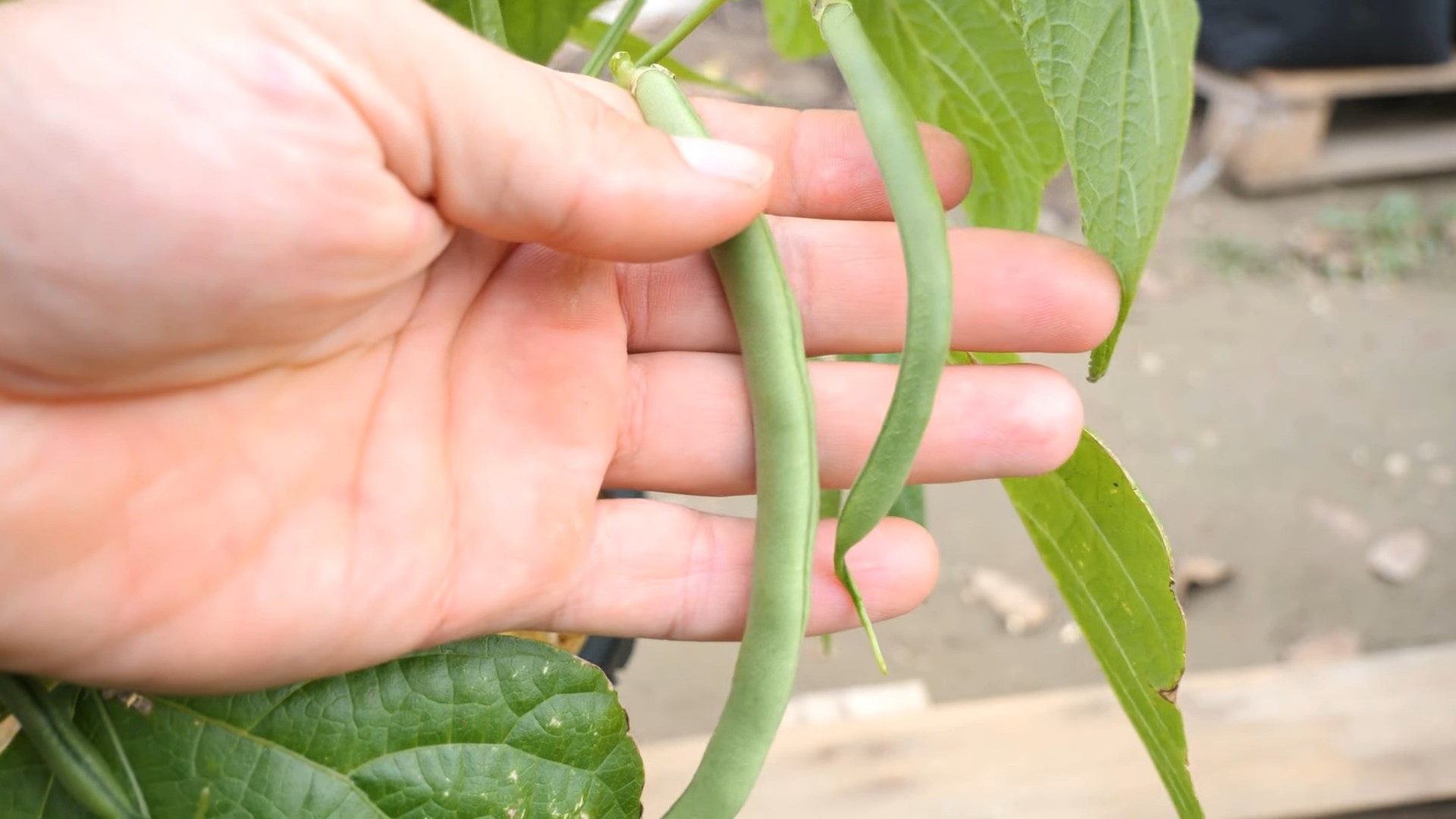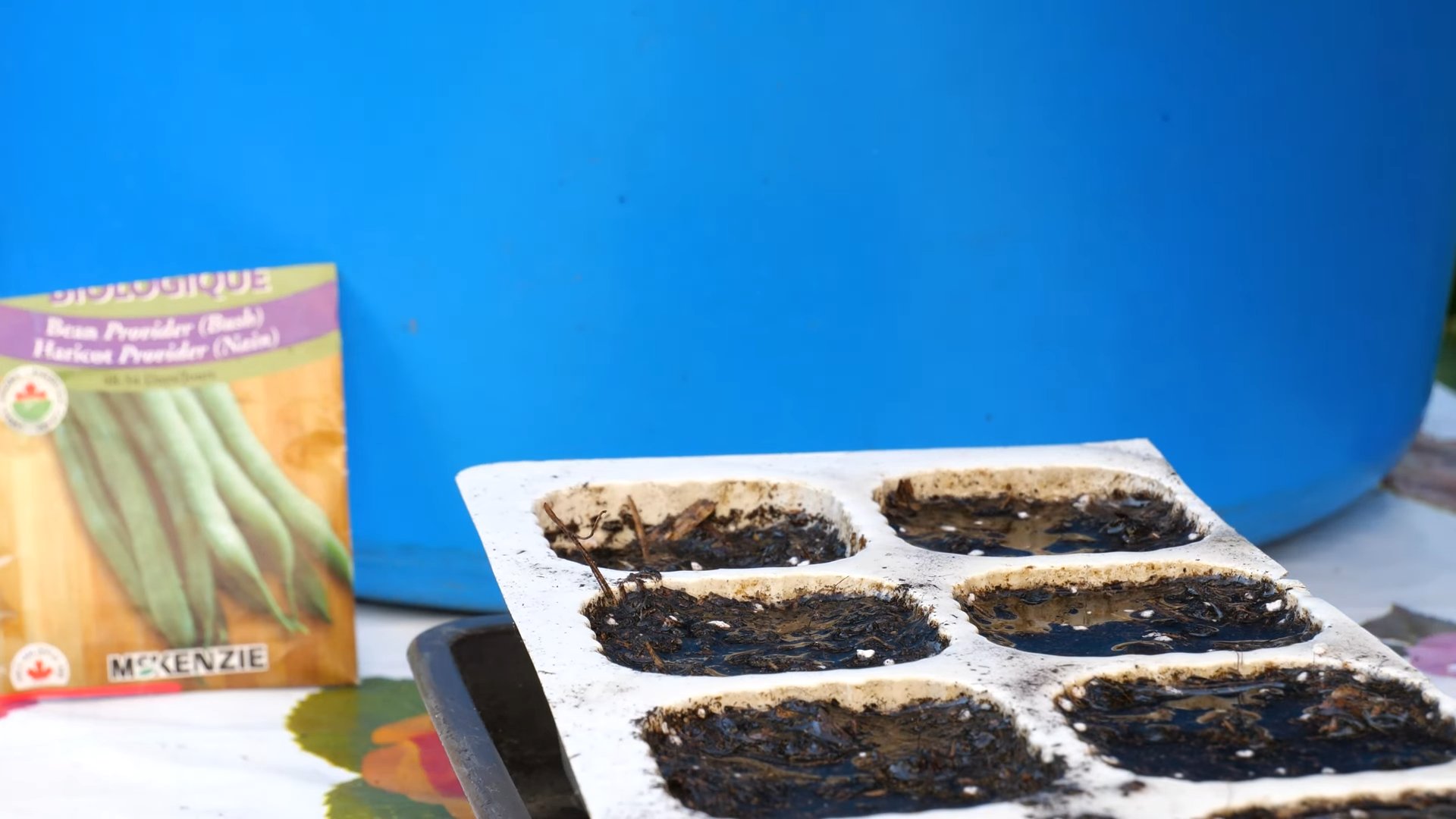Growing Green Beans Home can be incredibly rewarding, and let me tell you, there’s nothing quite like the taste of fresh, homegrown green beans straight from your garden! For centuries, cultivating your own food has been a cornerstone of self-sufficiency and a connection to the earth. From ancient civilizations tending their plots to modern-day urban gardeners, the desire to nurture and harvest our own produce remains strong.
But let’s be honest, sometimes getting those beans to thrive can feel like a real challenge. That’s where a few clever DIY tricks and hacks come in handy! Are you tired of battling pests, struggling with poor yields, or simply feeling overwhelmed by the thought of starting a garden? Well, fear not! I’m here to share some simple, effective, and budget-friendly solutions that will transform your green bean growing experience.
This article is packed with practical tips and step-by-step instructions that will empower you to maximize your harvest and enjoy the delicious fruits (or rather, vegetables!) of your labor. Whether you’re a seasoned gardener or a complete beginner, you’ll find valuable insights to help you succeed in growing green beans home. So, grab your gardening gloves, and let’s get started!

Growing Green Beans: A Beginner’s Guide to Bountiful Harvests
Hey there, fellow gardening enthusiasts! I’m so excited to share my tried-and-true method for growing green beans. There’s nothing quite like the taste of fresh, homegrown green beans, and trust me, it’s easier than you think! This guide will walk you through every step, from choosing the right variety to harvesting your delicious crop. Let’s get our hands dirty!
Choosing Your Green Bean Variety
Before we even think about planting, we need to decide what kind of green beans we want. There are two main types: bush beans and pole beans.
* Bush Beans: These are compact and don’t require any support. They’re perfect for smaller gardens or containers. They produce most of their beans at once, making them great for canning or freezing.
* Pole Beans: These are vining beans that need a trellis or other support to climb. They produce beans over a longer period, giving you a continuous harvest.
Within each type, there are tons of varieties to choose from! Here are a few of my favorites:
* Bush Bean Varieties:
* ‘Blue Lake Bush’: A classic, reliable variety with excellent flavor.
* ‘Contender’: An early producer, great for cooler climates.
* ‘Provider’: Another early variety that’s disease-resistant.
* Pole Bean Varieties:
* ‘Kentucky Wonder’: A popular heirloom variety with a rich flavor.
* ‘Scarlet Runner’: Beautiful red flowers and delicious beans. Plus, the hummingbirds love them!
* ‘Fortex’: Long, slender beans with a delicate flavor.
Consider your garden space, climate, and personal preferences when making your choice. I usually grow a mix of bush and pole beans to have a continuous supply throughout the season.
Preparing Your Garden Bed
Green beans thrive in well-drained soil that’s rich in organic matter. Here’s how I prepare my garden bed:
* Sunlight: Green beans need at least 6-8 hours of sunlight per day. Choose a sunny spot in your garden.
* Soil Testing: It’s always a good idea to test your soil to determine its pH and nutrient levels. Green beans prefer a slightly acidic to neutral pH (around 6.0-7.0). You can buy a soil testing kit at most garden centers.
* Soil Amendment: Amend your soil with compost or well-rotted manure to improve drainage and fertility. I usually add a few inches of compost to my garden bed before planting.
* Tilling or Digging: Loosen the soil to a depth of about 12 inches. This will allow the bean roots to grow easily. You can use a tiller or simply dig with a shovel.
* Raking: Rake the soil smooth to create a level planting surface.
Planting Your Green Beans
Now for the fun part – planting! Here’s my step-by-step guide:
1. Timing: Green beans are warm-season crops, so wait until the danger of frost has passed before planting. Soil temperature should be at least 60°F (15°C). I usually plant my green beans in late spring or early summer.
2. Soaking Seeds (Optional): Soaking your bean seeds in water for a few hours before planting can help them germinate faster. I usually soak mine overnight.
3. Planting Bush Beans:
* Sow seeds 1 inch deep and 2-3 inches apart in rows that are 18-24 inches apart.
* Gently cover the seeds with soil and water thoroughly.
4. Planting Pole Beans:
* Install your trellis or support system before planting.
* Sow seeds 1 inch deep and 4-6 inches apart at the base of the trellis.
* Gently cover the seeds with soil and water thoroughly.
5. Watering: Keep the soil consistently moist, but not waterlogged, until the seeds germinate.
6. Mulching: Once the seedlings emerge, apply a layer of mulch around the plants to help retain moisture, suppress weeds, and regulate soil temperature. I like to use straw or shredded leaves.
Caring for Your Green Beans
Once your green beans are planted, it’s important to provide them with the care they need to thrive.
1. Watering: Water your green beans regularly, especially during dry periods. Aim for about 1 inch of water per week. Water deeply and less frequently to encourage deep root growth.
2. Fertilizing: Green beans don’t need a lot of fertilizer, but a side dressing of compost or a balanced fertilizer a few weeks after planting can help boost growth. Avoid over-fertilizing, as this can lead to excessive foliage growth and fewer beans.
3. Weeding: Keep your garden bed free of weeds, as they can compete with your green beans for nutrients and water. Hand-pull weeds regularly or use a hoe to cultivate the soil.
4. Pest Control: Green beans can be susceptible to pests like aphids, bean beetles, and spider mites. Inspect your plants regularly and take action if you notice any problems.
* Aphids: Spray aphids with a strong stream of water or use insecticidal soap.
* Bean Beetles: Hand-pick bean beetles or use an insecticide specifically designed for them.
* Spider Mites: Increase humidity around your plants by misting them with water or using a humidifier. You can also use insecticidal soap or horticultural oil.
5. Disease Control: Green beans can also be affected by diseases like powdery mildew and bean rust.
* Powdery Mildew: Improve air circulation around your plants and avoid overhead watering. You can also use a fungicide specifically designed for powdery mildew.
* Bean Rust: Remove infected leaves and improve air circulation. You can also use a fungicide specifically designed for bean rust.
6. Supporting Pole Beans: As your pole beans grow, make sure they have adequate support to climb. You may need to gently guide the vines onto the trellis or support system.
Harvesting Your Green Beans
The moment we’ve all been waiting for – harvesting! Here’s how I do it:
1. Timing: Green beans are usually ready to harvest about 50-60 days after planting. The beans should be firm, crisp, and snap easily when bent.
2. Harvesting Technique: Gently snap the beans off the plant, being careful not to damage the stems.
3. Frequency: Harvest your green beans regularly, about every 2-3 days, to encourage continued production.
4. Storage: Freshly harvested green beans can be stored in the refrigerator for up to a week. For longer storage, you can blanch and freeze them.
Troubleshooting Common Problems
Even with the best care, you might encounter some problems while growing green beans. Here are a few common issues and how to address them:
* Poor Germination: If your bean seeds aren’t germinating, it could be due to cold soil, poor soil quality, or old seeds. Make sure the soil temperature is at least 60°F (15°C) before planting, and use fresh seeds.
* Yellowing Leaves: Yellowing leaves can be a sign of nutrient deficiency, overwatering, or disease. Check your soil pH and nutrient levels, and adjust your watering schedule accordingly.
* Lack of Bean Production: If your green bean plants are growing well but not producing beans, it could be due to lack of pollination, high temperatures, or over-fertilization. Make sure your plants are getting enough sunlight and water, and avoid over-fertilizing.
* Pest Infestations: As mentioned earlier, green beans can be susceptible to pests like aphids, bean beetles, and spider mites. Inspect your plants regularly and take action if you notice any problems.
Saving Seeds for Next Year
If you want to save seeds from your green beans for next year, here’s how I do it:
1. Choose Healthy Plants: Select healthy, disease-free plants to save seeds from.
2. Allow Beans to Mature: Allow some of the beans to mature fully on the plant. They will become dry and brown.
3. Harvest the Dry Beans: Once the beans are completely dry, harvest them from the plant.
4. Shell the Beans: Shell the beans and discard any that are damaged or discolored.
5. Dry the Seeds: Spread the seeds out on a tray and allow them to dry completely for a few weeks.
6. Store the Seeds: Store the dried seeds in an airtight container in a cool, dark, and dry place.
Enjoying Your Harvest
Now that you’ve harvested your delicious green beans, it’s time to enjoy them! There are so many ways to

Conclusion
So, there you have it! Growing green beans at home is not only achievable, but it’s also incredibly rewarding. Forget those bland, pre-packaged beans from the grocery store. Imagine stepping out into your own backyard and harvesting crisp, vibrant green beans bursting with flavor. This DIY approach puts you in control, allowing you to cultivate the freshest, most delicious green beans imaginable.
Why is this a must-try? Because it’s about more than just food; it’s about connection. It’s about connecting with nature, understanding where your food comes from, and experiencing the satisfaction of nurturing something from seed to table. Plus, homegrown green beans simply taste better! They’re sweeter, crisper, and more flavorful than anything you can buy. You’ll notice the difference immediately.
Beyond the superior taste, growing your own green beans is also a sustainable choice. You’re reducing your carbon footprint by eliminating transportation and packaging. You’re also ensuring that your beans are grown without harmful pesticides or chemicals, unless you choose to use them, of course. You have complete control over the growing process.
Looking for variations? Consider exploring different varieties of green beans. Bush beans are compact and ideal for smaller gardens or containers, while pole beans require trellises or supports but offer a higher yield. Experiment with different colors too! Yellow wax beans and purple green beans add visual appeal to your garden and your plate. You can also try succession planting, sowing new seeds every few weeks to ensure a continuous harvest throughout the growing season. Another fun variation is to interplant your green beans with companion plants like marigolds or nasturtiums to deter pests naturally.
Don’t be intimidated if you’re a beginner gardener. Growing green beans is relatively easy, and the rewards are well worth the effort. With a little planning, some basic supplies, and a bit of patience, you can enjoy a bountiful harvest of fresh, homegrown green beans.
We wholeheartedly encourage you to give this DIY trick a try. Start small, learn as you go, and don’t be afraid to experiment. Once you taste the difference between homegrown and store-bought green beans, you’ll never go back!
And most importantly, we want to hear about your experience! Share your tips, tricks, and triumphs in the comments below. Let us know what varieties you’re growing, what challenges you’ve faced, and what delicious dishes you’ve created with your homegrown green beans. Your insights can help other aspiring gardeners embark on their own green bean growing journey. So, get your hands dirty, plant some seeds, and get ready to enjoy the taste of success! Happy gardening!
Frequently Asked Questions (FAQ)
What is the best time to plant green beans?
The ideal time to plant green beans is after the last frost in your area, when the soil has warmed to at least 60°F (15°C). Green beans are sensitive to cold temperatures, so planting too early can damage or kill the seedlings. Check your local weather forecast and planting guides to determine the best planting date for your region. A good rule of thumb is to plant about two weeks after the average last frost date. You can also start seeds indoors a few weeks before the last frost to get a head start, but be sure to harden them off before transplanting them outdoors.
How much sunlight do green beans need?
Green beans require at least 6-8 hours of direct sunlight per day to thrive. Choose a planting location that receives plenty of sunlight throughout the day. If you’re growing green beans in containers, make sure to place them in a sunny spot. Insufficient sunlight can lead to leggy plants with poor yields. If you live in a particularly hot climate, some afternoon shade may be beneficial to prevent the plants from overheating.
What kind of soil is best for growing green beans?
Green beans prefer well-drained soil that is rich in organic matter. Amend your soil with compost or other organic materials before planting to improve drainage and fertility. The ideal soil pH for green beans is between 6.0 and 7.0. You can test your soil pH using a soil testing kit and adjust it accordingly. Avoid planting green beans in heavy clay soil, as this can lead to root rot. If you have clay soil, consider growing green beans in raised beds or containers with a well-draining potting mix.
How often should I water my green beans?
Green beans need consistent moisture to produce a good harvest. Water deeply and regularly, especially during hot, dry weather. Aim to keep the soil consistently moist but not waterlogged. Water at the base of the plants to avoid wetting the foliage, which can increase the risk of fungal diseases. Mulching around the plants can help to retain moisture and suppress weeds. Check the soil moisture regularly by sticking your finger into the soil. If the top inch of soil feels dry, it’s time to water.
Do green beans need fertilizer?
Green beans are relatively light feeders, but they can benefit from a balanced fertilizer. Apply a fertilizer that is specifically formulated for vegetables according to the package directions. Avoid over-fertilizing, as this can lead to excessive foliage growth and reduced bean production. You can also amend your soil with compost or other organic materials to provide a slow-release source of nutrients. A side dressing of compost tea or fish emulsion can also be beneficial during the growing season.
What are some common pests and diseases that affect green beans?
Common pests that affect green beans include aphids, bean beetles, and spider mites. These pests can damage the foliage and reduce yields. Control pests by handpicking them off the plants, using insecticidal soap, or introducing beneficial insects like ladybugs. Common diseases that affect green beans include powdery mildew, bean rust, and anthracnose. These diseases can cause spots on the leaves and reduce plant vigor. Prevent diseases by providing good air circulation, avoiding overhead watering, and using disease-resistant varieties. If diseases do occur, treat them with a fungicide according to the package directions.
How do I harvest green beans?
Harvest green beans when the pods are firm, crisp, and fully developed but before the beans inside become too large and tough. Snap the beans off the plant carefully to avoid damaging the stems. Harvest regularly to encourage continued production. Overripe beans will be tough and stringy. The frequency of harvesting will depend on the variety of green beans you are growing and the growing conditions. Generally, you can expect to harvest green beans every few days once they start producing.
Can I grow green beans in containers?
Yes, you can definitely grow green beans in containers! Choose a container that is at least 12 inches deep and wide to provide enough room for the roots to grow. Use a well-draining potting mix and make sure the container has drainage holes. Bush bean varieties are generally better suited for containers than pole bean varieties, as they are more compact. Provide support for the plants if needed, such as a small trellis or stakes. Water and fertilize regularly, as container-grown plants tend to dry out and deplete nutrients more quickly than those grown in the ground.
How do I save seeds from my green beans?
To save seeds from your green beans, allow some of the pods to mature fully on the plant. The pods will turn brown and dry out. Once the pods are completely dry, shell the beans and allow them to dry further for a few days. Store the dried beans in an airtight container in a cool, dry place. Label the container with the variety of green beans and the date of harvest. You can use these seeds to plant next year’s crop. Note that hybrid varieties may not produce true-to-type seeds, so it’s best to save seeds from heirloom or open-pollinated varieties.




Leave a Comment